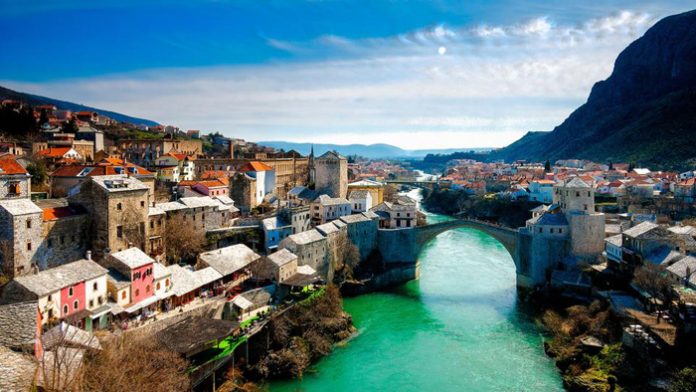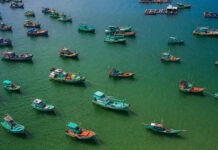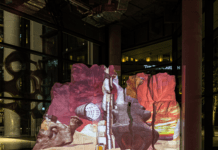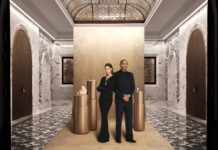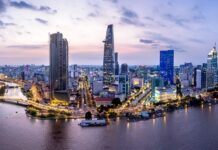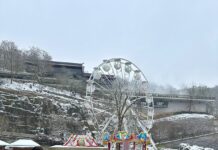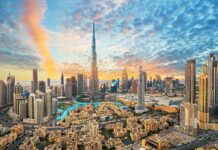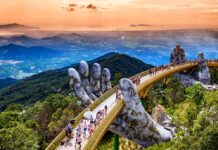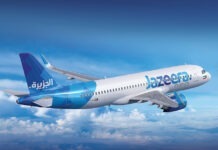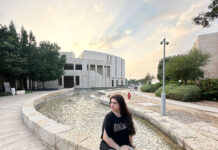Unintentionally revealing more perhaps than just the shape of its borders, this remains a country cleaved into two distinct entities, the result of a bloody war in the mid-1990s. However, Bosnia-Herzegovina is now busily, and deservedly, re-etching itself on the world travel map as a bona fide backpacker magnet of some repute.
PLACES

Sarajevo: With their imaginations and travel memories fired by spiky minarets, grilled kebabs and the all-pervasive aroma of ground coffee, many travelers see in Sarajevo a Slavic mini-Istanbul.
See: Beyond the Ottoman notes of alleys of central Baščaršija, see the ‘Turkish Town’ and its steep valley sides fuzzed with red-roofed Bosnian houses, and prickled with uncountable minarets, climbing towards green-topped mountain ridges. At the westernmost end of the tramway spine, affluent Ilidža gives the city a final parkland flourish. The 18th-century house-museum, Svrzo House, an oasis of white-washed walls, cobbled courtyards and partly vine-draped dark timbers helps visitors imagine Sarajevo life in eras past.
Do: In winter, Bjelašnica and Jahorina offer some of Europe’s best-value skiing. At the Tunnel Museum – an important tunnel under the airport during the siege, watch the home-movie-style DVD that describes its creation, and the reasoning behind it, before being led through a small section of the now-collapsed route.
Shop: One recommended souvenir purchase is a Bosnian coffee set. Track down Butik Badem in Abadžiluk, which doles out superb Turkish sweets, dried mulberries, and a lot more besides.
Eat: You cannot walk more than 10 meters in Baščaršija without coming across yet another ćevabdžinica (steak house). Burek (phyllo pastry) is similarly easy to hunt down.
Events: Watch out for the Jazz Fest, with some stellar names, usually held in November.

Bosnia: Occupying roughly four-fifths of the country, mountainous Bosnia contains some of the country’s most appealing towns.
See: First up, get a sense of medieval history in Travnik; see the many Ottoman-period high-ranking officials’ (known as viziers) tombs (turbe) dotted around town. Jajce (translating to ‘egglet’), derived its name from the shape of a hill jutting up in the Old Town, ringed with walls and topped with an impressive citadel and a waterfall crashing through the town’s centre.
Do: Head to laidback Bihać, one of Europe’s best rafting hotspots. Adventure sports aside, head to Bihać’s most interesting place, the Captain’s Tower, once a prison, now a museum.
Eat: Just under the majestic fifteenth-century castle is Plavna Voda, a quiet huddle of streamside restaurants where you can eat trout caught further upstream.

Herzegovina: Less known than its big brother Bosnia, Herzegovina, the land of muscular peaks and rushing rivers has more to see. Famed for its fine wines and sun-packed fruits, Herzegovina has some intriguing historic towns.
See: Steep, cobblestoned streets wind down to fast-flowing, turquoise-blue Neretva River and its famous Stari Most (Old Bridge), which becomes incredibly photogenic when brave locals dive from the apex. Here, the narrow Kujundžiluk ‘gold alley’ bustles joyously with trinket sellers and lead across the Stari Most to the 350-year-old Turkish House. Furnished for a Bosnian family of some stature, the House’s courtyard is a veritable museum of intriguing Islamic symbolic designs.
Do: By joining a tour or hiring a car you could visit Blagaj, Počitelj, Međugorje and the Kravice waterfalls all in one busy day. Absorb the religious curiosities of Medugorije or call in at Trebinje, by far the most pleasant town in the Republika Srpska.
Shop: At Razira Kajtaz, buy souvenirs at gate-tower entrance to the Old Town.
Only in Bosina

Never call a Bosnian coffee, a Turkish coffee, since it is not just a point of national pride, it is a matter of distinction in making. The consumption of coffee (kafa), here, has been elevated to something approaching an art form. Go for a gimmicky lesson to receive a Bosnian coffee-making certificate from Rahatlook, a lovely café in Baščaršija. If you want sugar, do not plop it in your coffee; instead, take a bite from one of the cubes on your tray and put it under your tongue to dissolve as you sip.
Where are you? The trophy for the strangest method of greeting has to go to Bosnia, with people saying ‘Dje si?’ when they see another person, which, in English, translates to, ‘Where are you?’
Three separate presidents: Politics in Bosnia continues to pit each of the three constituent peoples — Bosniaks, Croats and Serbs — against one another.

